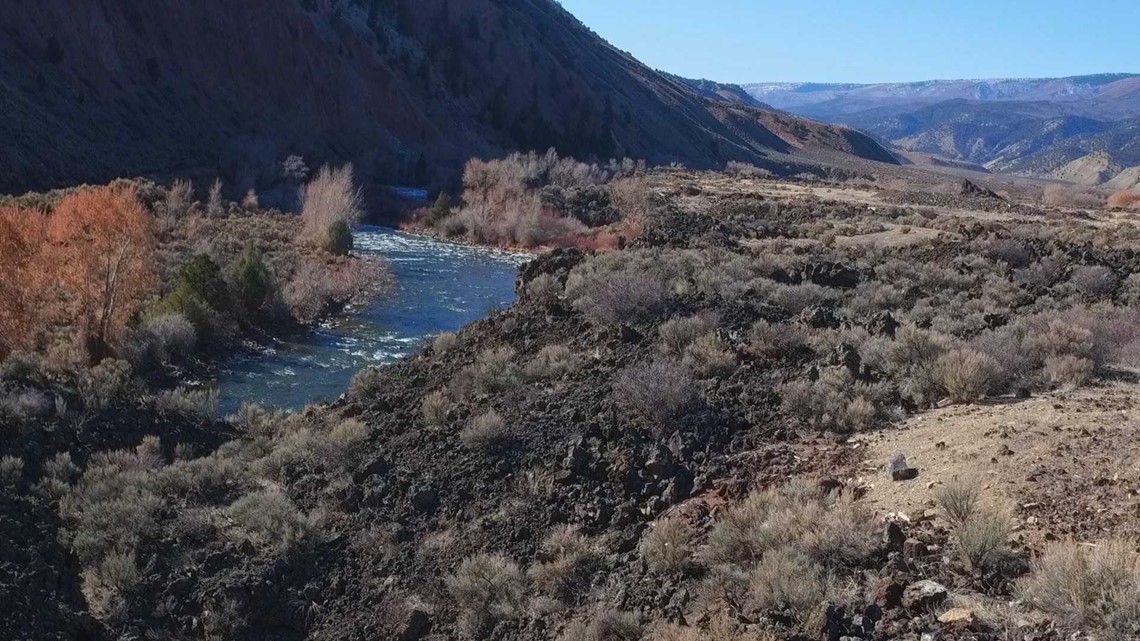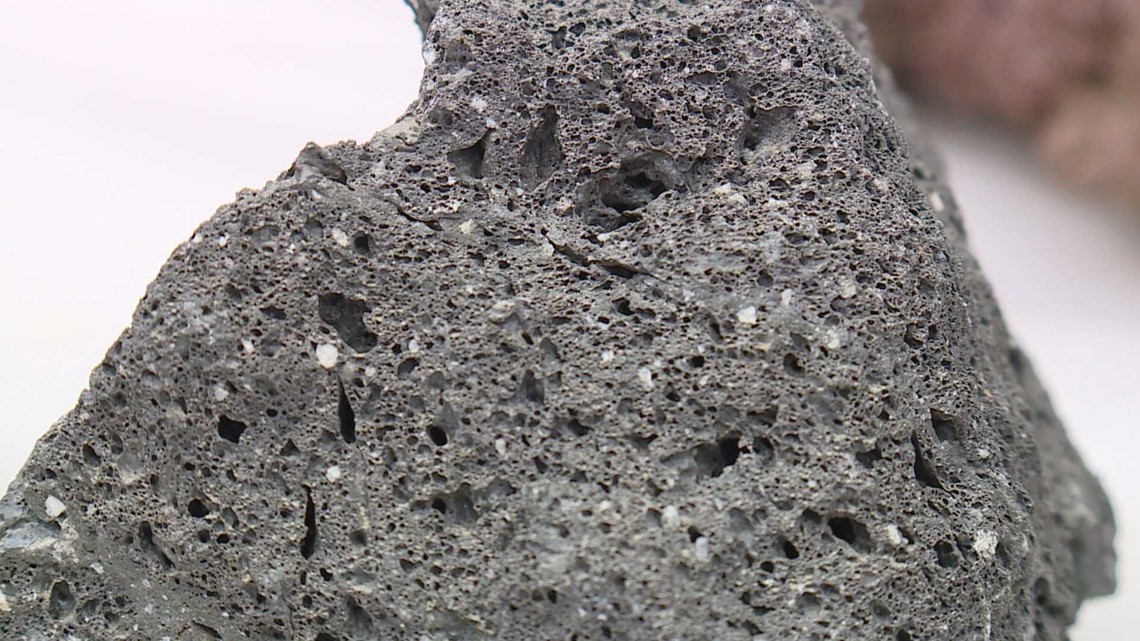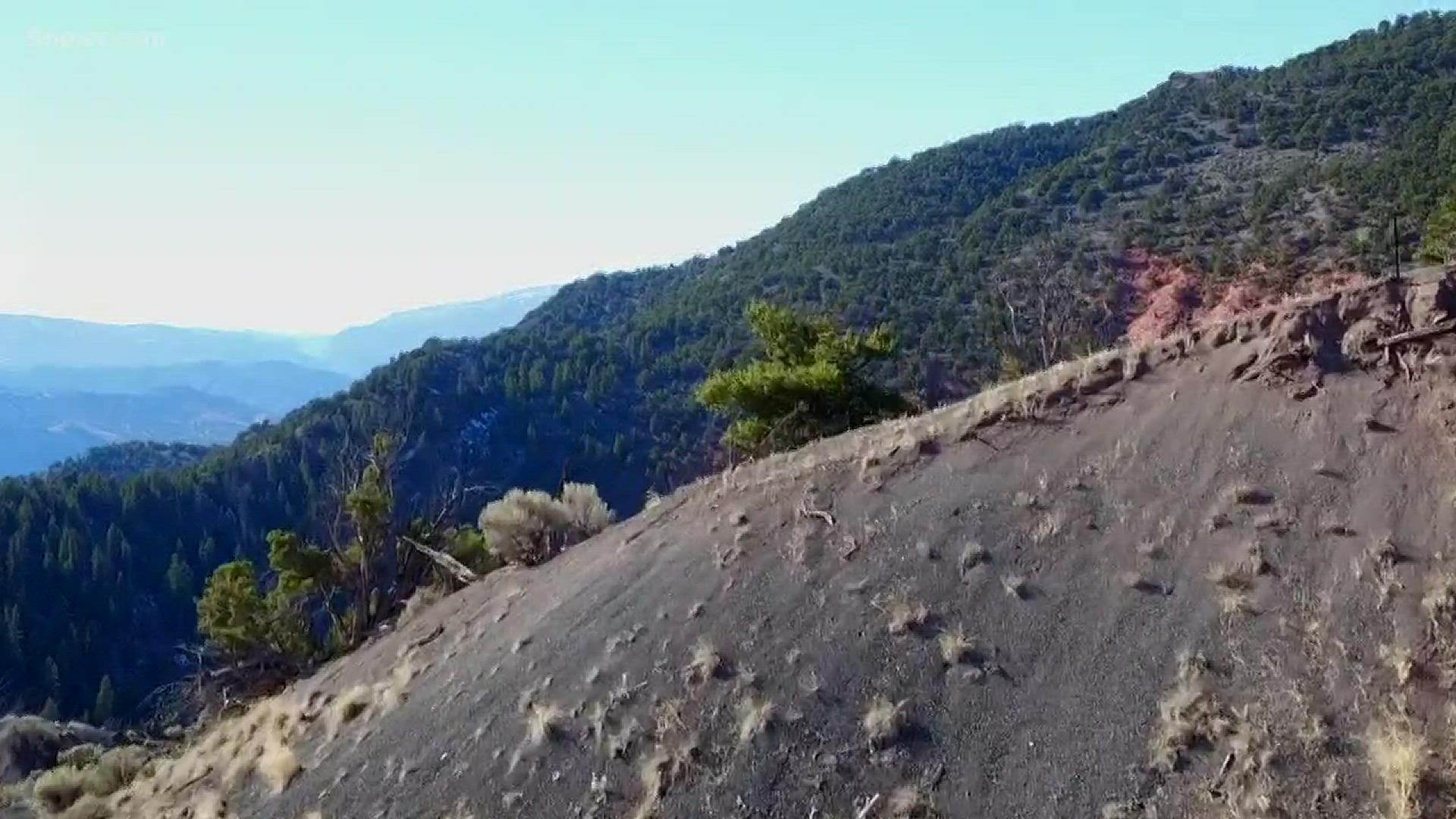The Dotsero Crater in western Eagle County, is Colorado’s only active volcano. A new report from the United States Geological Survey lists it as a moderate threat to human activity.
Don’t worry, Dotsero is not expected to erupt again anytime soon, but it does give us a chance to explore the report, and this mysterious piece of Colorado geology a little further.
To help with the details, 9NEWS turned to Richard Busch with the Denver Museum of Nature and Science. He is an archeologist by expertise, but as an educator with the museum, he must be well versed in everything from anthropology to zoology.
The 2018 Volcanic Threat Assessment is actually an update to a report first released by the USGS in 2005. All 161 of the countries active volcanoes are listed and categorized by threat level, from very high, to low.
“This is just a qualitative analysis of risk. It does not show the likelihood of eruption,” Busch said. “It just shows what would be impacted if there was an eruption.”
Busch said the Dotsero Crater’s close proximity to Interstate 70, and air traffic routes could be the reason it is listed as number 82 on the list, in the moderate threat category.
What is an active volcano?
The USGS defines an active volcano as anything that has erupted in the last 10,000 years. In geologic time that’s not very long, but to humans, it might seem odd to say something that has been inactive for 9,999 years is active.


“Dotsero last erupted about 4,200 years ago, but just because it’s listed as active, it doesn’t mean that it is actively erupting, or that we are even predicting that it is going to erupt,” Busch said.
Busch said that Dotsero has erupted twice that we know of. The last time was about the time the Great Pyramids were being built in Egypt. He also said there were Native American people in the area at the time.
“Dotsero is kind of an anomaly, we don’t really know why it exists where it exists.”
Busch said most of Colorado’s volcanic activity ceased about 27 to 30 million years ago, so how Dotsero was able to pop twice in the last 6,000 years is a bit of a mystery.
He also said that Colorado’s volcanic history was largely due to the Pacific Plate subducting underneath the United States.
What type of volcano is Dotsero, and what type of eruptions did it have?
Busch: “The type of volcano is often called a Maar because of its relationship to water. There will often be a shallow lake that forms in the crater. At the base of the crater, there was a vent that most of the magma came out of.”
“It was a phreatomagmatic eruption. Meaning, lava came in contact with water. The water went from liquid to steam. Think of it like a corked bottle, and it just popped.
How big was the eruption?
Busch: “It was largely a steam eruption, but a little bit of basalt came out too. The lava flow was only a couple miles long. It spilled out over what is now I-70 and actually diverted the Eagle River down to the south of that flood plain.”
“So, it’s not big. This is not a major eruption event. It’s Earth having a burp is essentially what’s going on.”
What are Dotsero Diamonds?
Shinny specs embedded in some of the volcanic rocks near the site are nicknamed Dotsero Diamonds.


“Before you go running out there to grab diamonds – they’re not diamonds,” Busch said. “They are little pieces of quartz that were picked up by the lava as it moved across the landscape. The heat of the basalt affected the outside rim of these quartz crystals, so they have a little rind on them. Most are very tiny, but there are some that can be quarter size, or half dollar size.”
What about the rumors of magma chambers?
The bubbling heat of the nearby Glenwood Hot Springs fuels rumors of a hidden magma chamber lurking below that part of Colorado.
“The articles and literature that I’m familiar with, says the opposite. We don’t know of any active magma chambers in Colorado,” Busch said.
“We can do chemical analysis on the water, and none of the water coming from Colorado hot springs has the marker that would indicate it came within close proximity to magma.”
Busch said that water from Colorado’s hot springs is heated deep below the earth near the mantle, and gets circulated back up to the surface.
What’s left in Dotsero today?
The 2,000 foot long crater is mostly filled in today, but is still about 200 feet deep. It is very close to the I-70 Dotsero exit. There is volcanic rock in the area, and volcanic cliffs along the edge of the Eagle River.
Hiking trails in the area make it easy to visit the Dotsero Crater, although there are no signs or markings to guide you. It’s pretty obvious from the trail above, however.


Is Dotsero expected to explode again?
Although not impossible, it is unlikely that Dotsero will erupt again.
“Probably not in our lifetime,” Busch said. “Probably not in our kids lifetime. I’m not holding my breath.”

